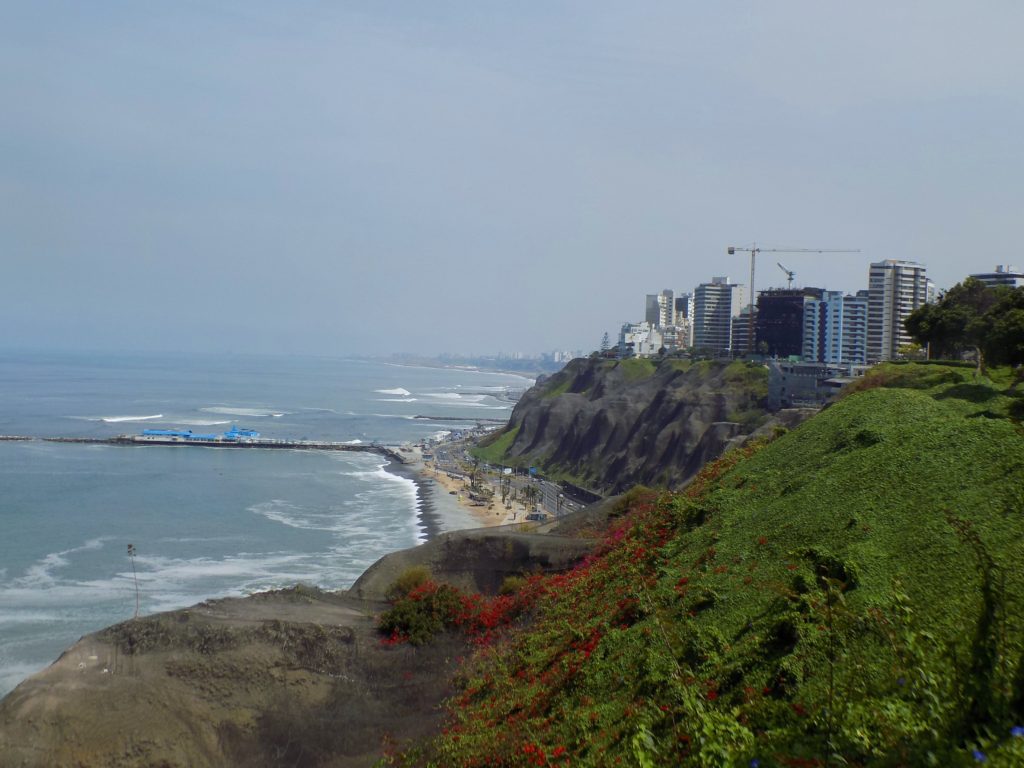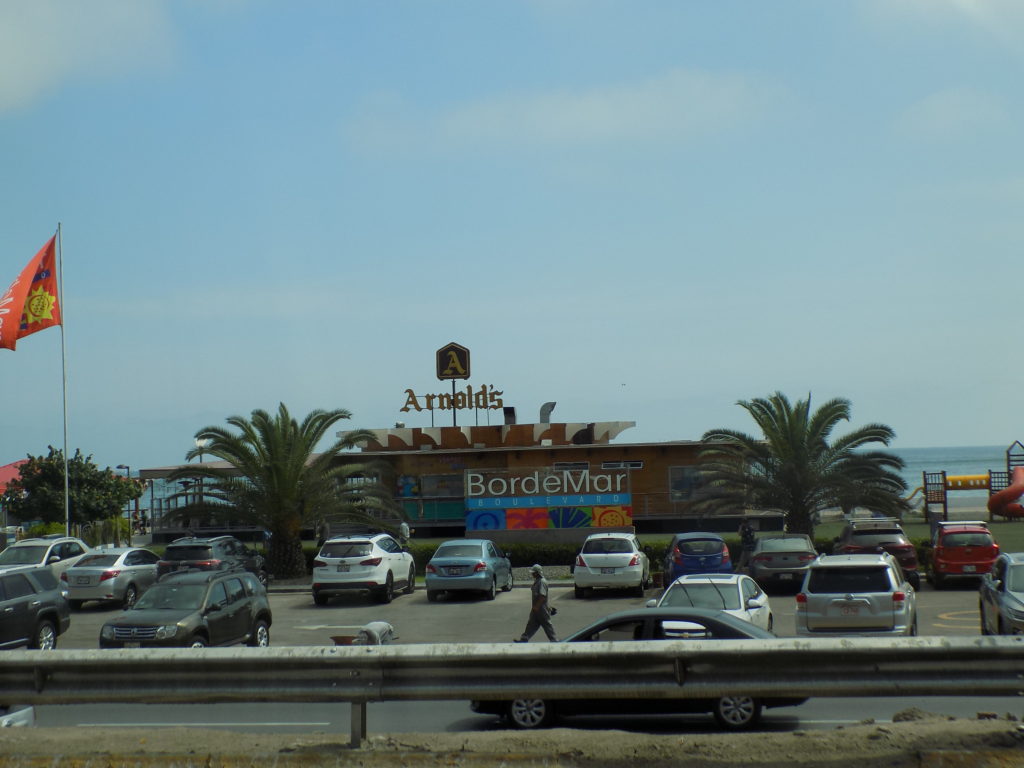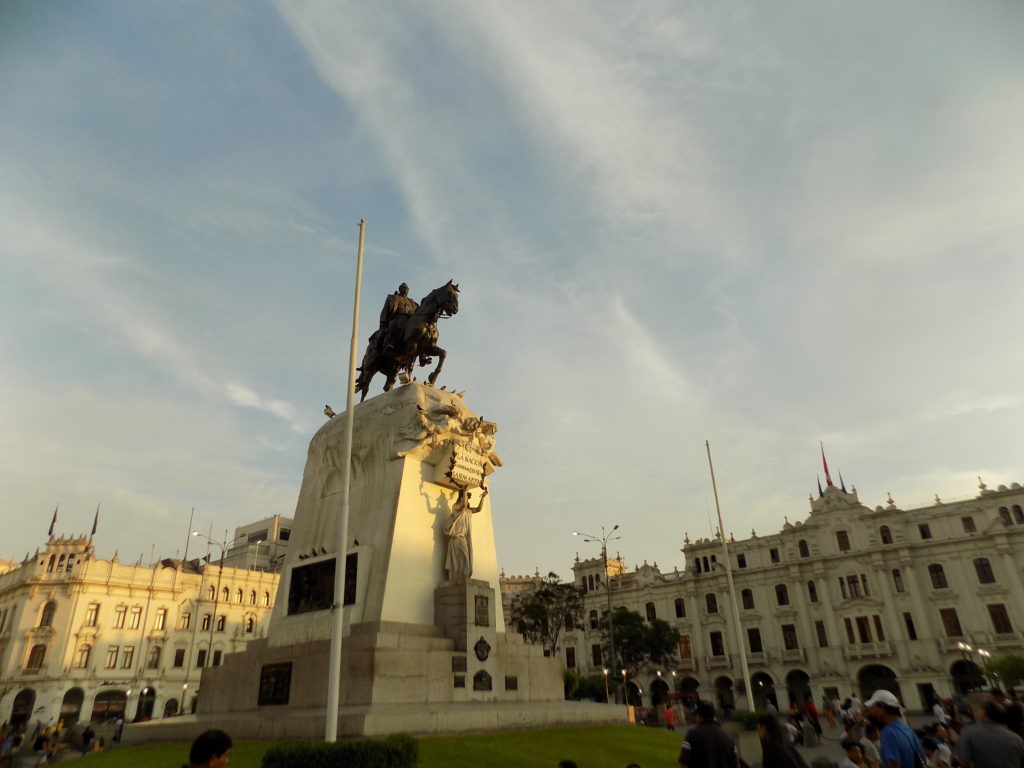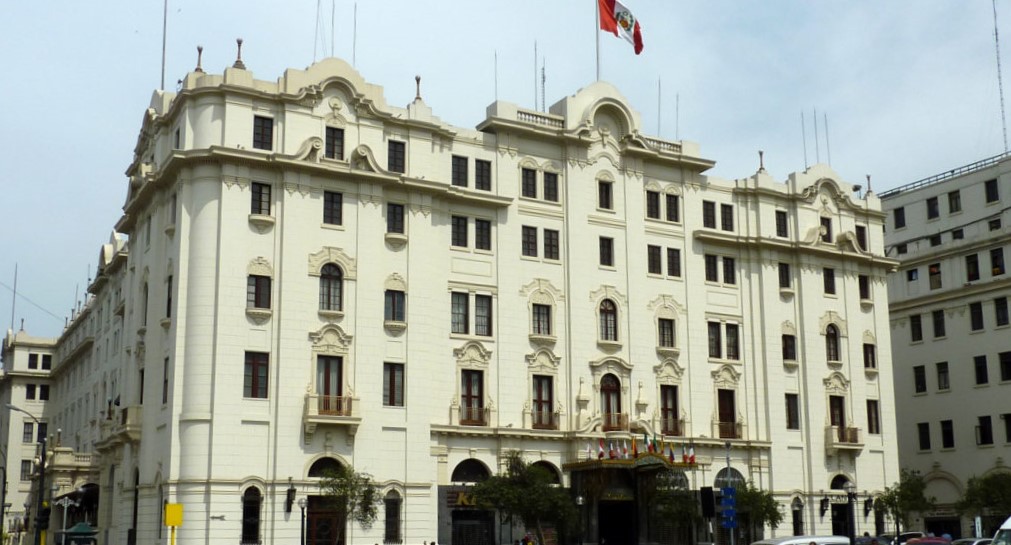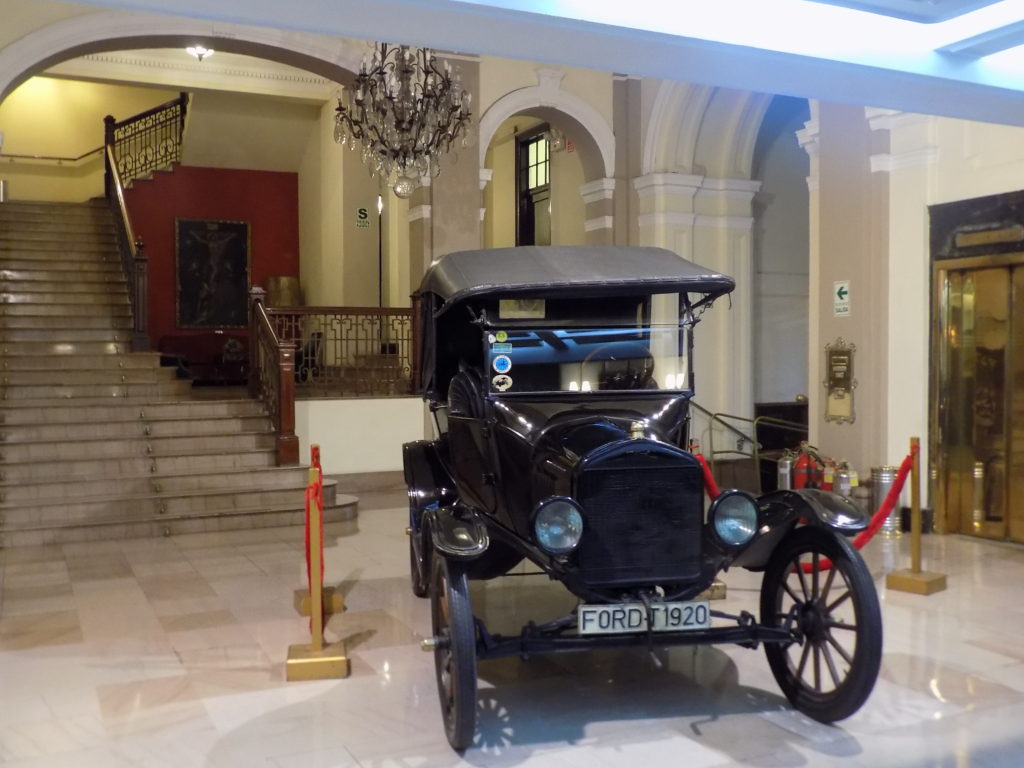The title of today’s post is more than simply in the key of a musical pun. It’s intended to hint that several aspects of Lima, if put on a graph, would generate a relatively flat line. I’ll start with the geographical aspect. As you can see in this picture,
Lima abuts the ocean so at least some part of it is at sea level but that’s only the beaches and to reach the city, you have to make a quick and nearly vertical ascent. Once there, the terrain turns relatively flat.
Generally, a city’s altitude is measured from its center and in this case that would be the Plaza de Armas where we will end our walk this evening. There Lima’s altitude is measured as 154 meters above sea level (MASL). The old city’s highest point is the Cerro San Cristóbal which reaches 338 MASL. (I’ve qualified this last sentence and the post’s title because while most sources cite Cerro San Cristóbal as the city’s zenith, I have found others that point to an unspecified location somewhere in Lima’s urban sprawl that reaches 1,500 MASL which would make it far from flat.)
While any number of cities are significantly flatter, this remains a fairly narrow range of only 184 meters change in elevation spread over a sprawling area that spans more than 60 kilometers north to south and exceeds 30 kilometers west to east. (Manhattan, for example, has a range of 1.5 MASL in lower Manhattan to 81 MASL in Bennett Park. The highest point of the five boroughs is Todt Hill on Staten Island which is a mere 122 MASL. I’m confident you could find cities with a narrower range of elevation even though at 783 square kilometers it’s just more than one-quarter of Lima’s size. I chose NYC to keep a consistent comparison since I’d used it for population and taxis.) So I’ll call Lima’s geography flatish as this view shows

[Aerial photo of Lima By Vengador1 Own work, CC BY-SA 4.0.]
and move on to a look at its climate.
One thing Limeños (or even Cusqueños serving as guides) will tell you is that it never rains in Lima. While this isn’t literally true, for practical purposes, it’s accurate. For example, according to worldweatheronline, in March 2019, Lima had five days with measurable rainfall with a cumulative total of 2.4 millimeters. Per weatherspark, the most likely day for rain is 25 January which has a one percent chance of receiving one millimeter of rainfall. On the other hand, resident Limeños will tell you of la garúa – the nearly perpetual mist that dominates the winter months (June to September) that can moisten the ground and will almost certainly bedew your clothes.
(A propos of nothing beyond Happy Days, and since it’s “Saturday, what a day” I thought I’d toss in this photo of a restaurant we passed on our way from the airport to the hotel.)
Much like its precipitation is essentially a flat line (and near zero at that), you can see similar flatness in the range of Lima’s temperature. Around the year, the low rarely falls below 15 degrees and the high generally tops out at about 27. August is the coldest month with an average high of 18 while February is the warmest month with an average high of 27 so over the entire year the high and low temperature falls within a range of 9-12 degrees. (The Washington, DC metro area where I live often has a wider spread than that on any given day.)
You can add daylight to this flatness list. Lima’s longest day has 12 hours 50 minutes of daylight. The shortest 11 hours 25 minutes. Again using New York as a point of comparison, that city’s shortest day is 9 hours 15 minutes and its longest 15 hours 6 minutes. Of course, the persistence of the garúa means limited actual sunshine – especially in the winter. The fall (the time of my visit) generally has the most sunshine – about six hours per day on average. Fortunately, I had two days there that were quite sunny.
A short walk from Plaza San Martín to Plaza de Armas.
At the end of the previous post our trio was in a taxi on the way from Miraflores to Lima’s city center ending that somewhat harrowing ride at the Plaza San Martín. The imposing statue at the center of the square
honors José de San Martín who is considered one of the two great liberators of the South American continent from European colonial rule.
San Martín was born in Yapeyu (now in Argentina) in 1778 but grew up in Spain where he became an officer in the Spanish Army. He resigned his commission about the time Napoleon was expanding his empire and returned to Argentina where he led an army that secured that nation’s independence in 1816.
San Martín then led his army across the Andes where he secured Chile’s independence before leading a fleet up the coast to Perú and declaring that country’s independence in 1821 with Lima as its capital.
(The other great South American liberator is Simón Bolívar whose statue we saw in Asuncíon and whose eponymous country we visited earlier. Bolívar worked mainly in the north where he gained independence for Venezuela, Colombia and Ecuador.
In much the same way that Pizarro conquered an Inkan empire weakened by civil war, San Martín and Bolívar exploited Spain’s weakness from its losses in the Peninsular War to gain independence for nations across South America.
The two men met privately in Guayaquil in 1822. While there has been much speculation about that meeting, no one knows the actual course of the discussion. However, it resulted in San Martín resigning his positions and returning to Argentina where he lived until his wife’s death in 1823. He then returned to Europe with his daughter and died in Boulogne in 1850.
These two generals were instrumental in breaking the colonial bonds with Spain in the 19th century. However, as was the case with the revolutionary leaders in the United Sates not quite a half century earlier, their triumphs cemented the power of the Europeans and offered little, if any, benefit to the indigenous people of either South or North America.)
We then made a brief stop at the Gran Hotel Bolívar that faces the square.
Built on state property in 1924 to celebrate the Battle of Ayacucho fought during Peru’s war for independence, one plan to elevate the hotel’s reputation was to make it a place that would host political notables. And it did. Charles de Gaulle, Richard Nixon, Robert Kennedy, and Japanese Emperor Akihito were among its guests.
Since it was for quite some time the only true luxury hotel in Lima, it was also the place to stay. Writers such as William Faulkner and Ernest Hemingway and Hollywood luminaries including Orson Welles, Ava Gardner and John Wayne were among its guests. (One legend says that during one stay Gardner got so drunk from pisco sours that, after dancing barefoot in the bar, she passed out and Wayne had to carry her to her room.)
But the real highlight for many current visitors is hearing the hotel’s ghost stories. There’s one tale of the woman in white who wanders the upper floor corridors and another about the guest who committed suicide by leaping from a fifth-floor window but who has yet to check out.
The hotel was declared a national monument in 1972 with an ambitious restoration plan but years of mismanagement and an owner who allegedly fled the country with embezzled funds forced the government to find new ownership. It’s still undergoing renovations
but the fifth and six floors remain closed. It’s unclear if they remain closed because there are too few funds to renovate it and too little demand to require that renovation or because there are too many ghosts. I’m going with the former.
There’s more of Lima coming up in part two.
